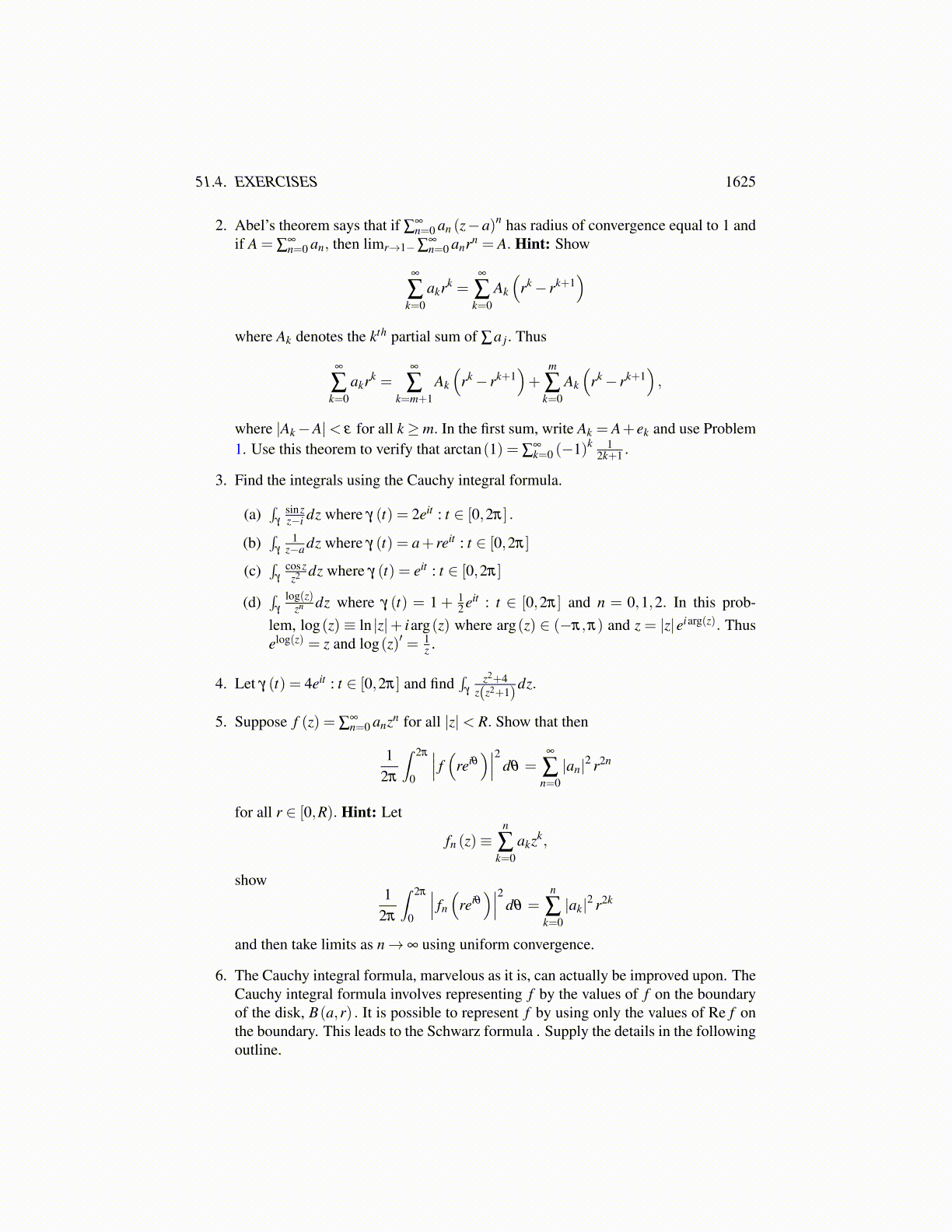
51.3. CAUCHY’S FORMULA FOR A DISK 1625
Therefore, the formula 51.3.12 follows.Uniform convergence on a closed disk of the analytic functions implies the target func-
tion is also analytic. This is amazing. Think of the Weierstrass approximation theorem forpolynomials. You can obtain a continuous nowhere differentiable function as the uniformlimit of polynomials.
The conclusions of the following proposition have all been obtained earlier in Theorem51.1.4 but they can be obtained more easily if you use the above theorem and lemmas.
Proposition 51.3.14 Let {an} denote a sequence in X. Then there exists R ∈ [0,∞] suchthat
∞
∑k=0
ak (z− z0)k
converges absolutely if |z− z0| < R, diverges if |z− z0| > R and converges uniformly onB(z0,r) for all r < R. Furthermore, if R > 0, the function,
f (z)≡∞
∑k=0
ak (z− z0)k
is analytic on B(z0,R) .
Proof: The assertions about absolute convergence are routine from the root test if
R≡(
lim supn→∞
|an|1/n)−1
with R = ∞ if the quantity in parenthesis equals zero. The root test can be used to verifyabsolute convergence which then implies convergence by completeness of X .
The assertion about uniform convergence follows from the Weierstrass M test and Mn≡|an|rn. ( ∑
∞n=0 |an|rn <∞ by the root test). It only remains to verify the assertion about f (z)
being analytic in the case where R > 0.Let 0 < r < R and define fn (z)≡∑
nk=0 ak (z− z0)
k . Then fn is a polynomial and so it isanalytic. Thus, by the Cauchy integral formula above,
fn (z) =1
2πi
∫γ
fn (w)w− z
dw
where γ (t) = z0 + reit , for t ∈ [0,2π] . By Lemma 51.3.13 and the first part of this proposi-tion involving uniform convergence,
f (z) =1
2πi
∫γ
f (w)w− z
dw.
Therefore, f is analytic on B(z0,r) by Corollary 51.3.12. Since r < R is arbitrary, thisshows f is analytic on B(z0,R) .
This proposition shows that all functions having values in X which are given as powerseries are analytic on their circle of convergence, the set of complex numbers, z, such that|z− z0|< R. In fact, every analytic function can be realized as a power series.